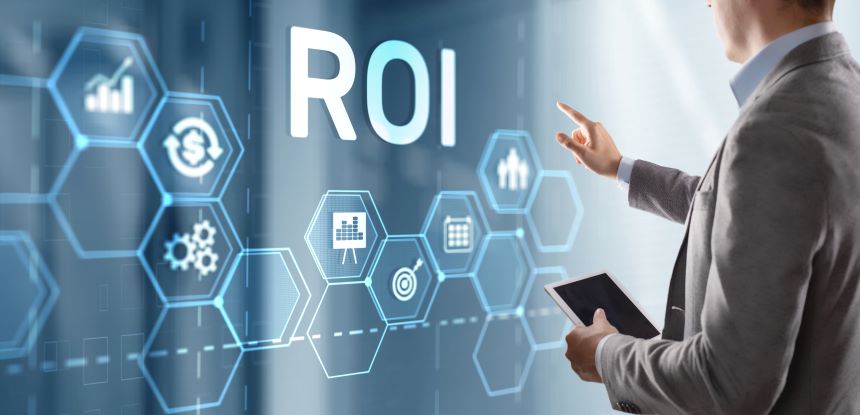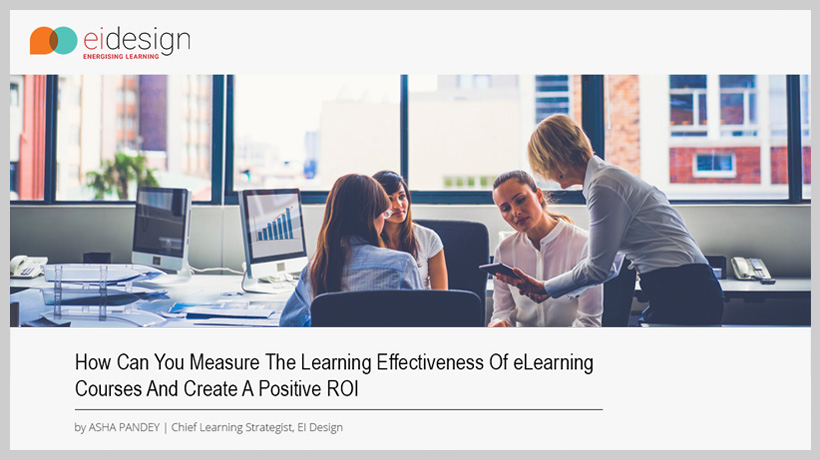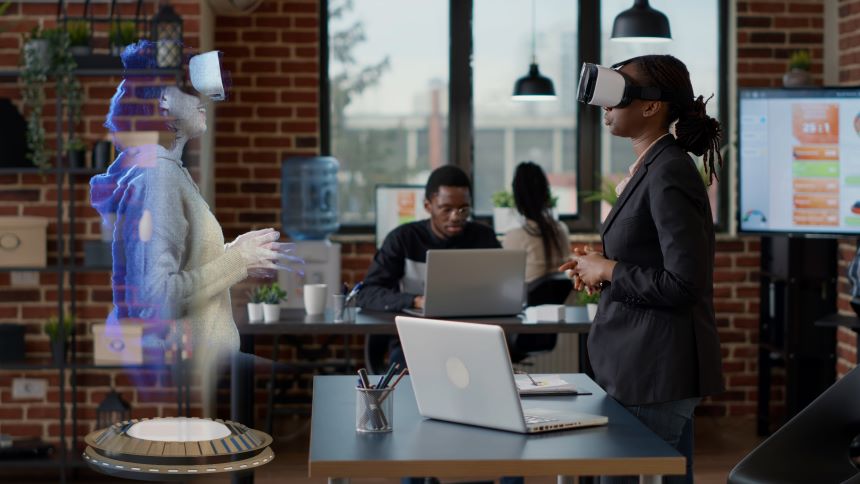
Mindset is foundational to the success or failure of any organization. This article explains why building a growth mindset is an important initiative for L&D teams and outlines strategies that will help create a learning mindset in employees.
What is a Growth Mindset?
A growth mindset, a term coined by psychologist Carol Dweck, reflects the belief that abilities and intelligence can be developed over time. This mindset contrasts with a fixed mindset, where abilities are seen as static and unchangeable. To comprehend the growth mindset, it’s crucial to recognize its defining characteristics:
- Belief in Development: Individuals with a growth mindset believe that skills and intelligence can be enhanced through effort and persistence.
- Embracing Challenges: They see challenges as opportunities for growth rather than obstacles to avoid.
- Persistence in the Face of Setbacks: People with a growth mindset are resilient. They view failures as learning experiences rather than signs of inability.
- Effort as a Path to Mastery: Effort is valued as a necessary part of skill development and achievement.
- Learning from Criticism: Constructive feedback is welcomed and used as a tool for improvement.
- Inspiration from the Success of Others: Instead of feeling threatened by others’ success, individuals with a growth mindset find motivation and lessons in their achievements.
Incorporating a growth mindset into daily life can lead to greater achievement and increased motivation. This mindset is particularly influential in educational and professional settings, where continuous learning and adaptation are crucial.
What is the Difference Between Growth Mindset and Fixed Mindset?
Understanding the distinction between a growth mindset and a fixed mindset is crucial for personal and professional development. These mindsets impact how individuals approach learning and challenges:
- Belief in Ability: In a growth mindset, abilities are seen as improvable through effort. Conversely, a fixed mindset views abilities as static, inherent traits.
- Response to Challenges: Those with a growth mindset embrace challenges as opportunities to learn, while individuals with a fixed mindset often avoid challenges, fearing failure or judgment.
- Perception of Effort: Effort is seen as a path to mastery in a growth mindset, but it might be perceived as fruitless or indicative of a lack of talent in a fixed mindset.
- Handling Feedback: A growth mindset welcomes constructive criticism as a means to improve, whereas a fixed mindset often sees criticism as a personal attack or affirmation of inadequacy.
- Inspiration from Others: The success of others motivates those with a growth mindset, whereas it might provoke envy or feelings of inferiority in those with a fixed mindset.
Why Is a Growth Mindset So Important?
The landscape of work, team dynamics, leadership, and management underwent significant changes in 2020.
According to LinkedIn’s 2021 Workplace Learning Report, the biggest area of focus for L&D teams is upskilling and reskilling employees. The success of organizations will depend on their ability to prepare their employees for the new normal and future states of work. This is certainly a tall order.
A growth mindset is a vital precursor for any upskilling or reskilling program. Building and promoting a growth mindset is an important focus area for L&D organizations.
Ironically, the education and L&D fields tend to be slow to change and innovation. For example, even during the pandemic, many L&D organizations tried to convert traditional face-to-face training into the VILT setting without changing anything other than the modality, despite feedback from learners.
What are the Benefits of Developing a Growth Mindset?
Adopting a growth mindset can have a transformative impact on both personal and professional aspects of life. Here are some key benefits:
- Enhanced Learning and Intelligence: A growth mindset fosters a love for learning and an understanding that intelligence can be developed.
- Increased Resilience: It builds resilience, enabling individuals to bounce back from failures and setbacks.
- Greater Creativity: Encourages creative problem solving and innovation, as challenges are viewed as opportunities.
- Improved Performance: Those with a growth mindset often achieve higher levels of success and performance in their careers and personal pursuits.
- Better Adaptability: This mindset aids in adapting to change and overcoming obstacles.
- Positive Attitude Towards Challenges: It instills a positive attitude towards facing and overcoming challenges.
- Healthier Relationships: Encourages open-mindedness and understanding in relationships, leading to healthier and more productive interactions.
Developing a growth mindset not only enhances personal abilities but also positively influences interactions with others and one’s overall approach to life.
L&D Teams Need to Leverage a Design Thinking Approach to Problem Solving
Design thinking is an approach to problem solving that emphasizes the power of ideation and iteration. L&D teams need to leverage more courage to take calculated risks. For mitigating the adverse effects of failed risks, L&D teams should swiftly and efficiently iterate their approaches.
Achieving this is only possible if the team comprises individuals with a learning mindset – individuals who actively seek and recognize failures, take responsibility, and learn from them.
A growth mindset builds antifragility within organizations. While it’s impossible to predict the future, employees with a learning mindset iterate quicker, efficiently reacting to new markets and creative competitors.
The Growth Mindset Helps Position L&D in Long-term Elevated Positions Within Organizations
With a growth mindset, L&D teams are viewed as problem solvers in an organization. For example, when calls to the support team increase, executives at many organizations first turn to the L&D team to collaborate, using data to identify the best solutions. Additionally, some of the new roles and responsibilities of the L&D team include the following:
- L&D is in the driver’s seat as change makers. L&D teams can now work to drive the way organizations work.
- From a growth mindset point of view, L&D teams leverage corporate strategy and tactics as opportunities to solve problems.
- As cited by the LinkedIn Learning 2021 Report, upskilling and reskilling are a top priority for L&D teams. This means that L&D teams will lead the way by preparing employees with the skills required to be successful in the future.
- Talent strategy, once lost in the Human Resource function, is now a C-suite initiative. Most organizations now view L&D as a necessity in this effort to develop a learning mindset amongst employees.
- Modeling a learning mindset and correct behavior, L&D teams should invest in themselves by skilling up for an increased emphasis on learning and development in the future.
Understanding the Two Types of Mindsets – The Tyranny of Now vs the Power of Yet
A fixed mindset (contrary to a learning mindset) confines companies and employees to a perspective where all problems should be solved with the same solution, disregarding their unique nuances – Too often, those problems cannot be solved by former practices and companies grow more and more impatient for immediate results – the tyranny of now (as termed by Carol Dweck).
In contrast, a growth mindset helps companies and employees see their progress. They can look back and learn from previous mistakes – Employees remain engaged, understanding that goals and tactics in the present are achievable. Employees with a learning mindset understand that while they may not understand immediately how to solve problems, they can iterate, experiment, and learn from mistakes in their journey toward success. This moves the company past seemingly insurmountable blocks while keeping employees engaged.
What is a Learning Mindset?
A learning mindset is a perspective that prioritizes continuous learning and improvement. Unlike a fixed or growth mindset, which focuses on abilities, a learning mindset centers on the process of acquiring knowledge and skills. Key characteristics include:
- Curiosity: A strong desire to understand new concepts and explore different ideas.
- Openness to Experience: Willingness to step out of comfort zones and engage with diverse viewpoints and situations.
- Adaptability: Flexibility in adjusting to new information or changing environments.
- Proactive Learning: Actively seeking out opportunities to learn and grow, rather than waiting for them to arise.
- Embracing Challenges: Viewing challenges as chances to learn rather than insurmountable obstacles.
By emphasizing the learning process, a learning mindset nurtures a lifelong journey of personal and professional growth.
Why a Learning Mindset Is Crucial for a Growth Mindset
- Foundation for Growth: A learning mindset lays the foundation for a growth mindset. It nurtures the desire to learn, which is essential for believing in the ability to grow.
- Enhances Adaptability: Embracing new knowledge and skills makes it easier to adapt, a key aspect of growth.
- Promotes Resilience: Continuous learning through challenges builds resilience, crucial for sustaining a growth mindset.
- Encourages Openness to Feedback: A learning mindset fosters openness to feedback, enhancing the growth process.
- Inspires Innovation: By valuing learning, new ideas are generated, fueling growth and development.
What are the Benefits of Developing a Learning Mindset at Work?
Developing a learning mindset at work offers numerous benefits:
- Enhances Problem-Solving Skills: A learning mindset encourages employees to approach problems creatively, leading to innovative solutions.
- Boosts Adaptability: In rapidly changing work environments, a learning mindset helps in quickly adapting to new processes and technologies.
- Improves Collaboration: It fosters a culture of knowledge sharing and teamwork, enhancing overall team performance.
- Increases Job Satisfaction: Employees with a learning mindset often find more fulfillment in their work, as they continuously grow and contribute meaningfully.
- Supports Career Advancement: Continuous learning and skill development can lead to more opportunities for career progression.
What Is the Mindset of a Lifelong Learner?
Lifelong learners embrace the power of yet and employ a growth mindset. They understand that solutions can be found through iteration and experimentation. Many in the younger generations, like Gen X and Gen Z, are more open to a learning mindset and look for established learning programs as vital elements to organizations for which they’d like to work.
Additionally, a learning mindset leads to teams with higher levels of cooperation and stronger norms for problem solving, creativity, and collaborative innovation.
What Must L&D Teams Do to Build a Growth Mindset and a Learning Mindset?
There are several steps L&D teams should take to build both a growth and learning mindset in themselves and in their learner populations.
- It’s important to measure the change and impact to corporate growth and strategic success vs just smile sheets post training. This helps to foster a learning mindset among even the most entrenched employees.
- Leveraging the burgeoning influence L&D teams have, they can push organizational alignment toward a learning culture where employees have the resources and time required for learning and experimentation. Developing a learning mindset like this is only possible if employees are also granted time for discovery and professional development outside of formal training situations.
- While L&D teams can design and develop formal upskilling and reskilling opportunities, organizations that foster an environment of extreme ownership at the individual level will enjoy the benefits of a growth mindset. Employees will take responsibility for their own growth, tracking movements and developments within their industry to identify learning options to remain relevant and competitive.
- At the same time, L&D teams can develop and promote employee learning habits and continuous learning and experimentation. They can design learning solutions that nudge and reinforce learning behavior and growth mindset. They can also create connected learning solutions that support formal training with informal learning, allow employees to curate and share content on social platforms, and seek out coaching and mentoring relationships.
- Finally, to develop a learning mindset, L&D teams can build and integrate learning into the flow of work. People typically forget 80% of what they learned within 30 days if they don’t apply that new knowledge or skills. Learning is about the journey, not the destination. By supporting and rewarding learning and experimentation, organizations can foster a healthy growth mindset.
Example of Growth Mindset and Learning Mindset in the Workplace
Imagine Sam, a project manager in a tech company. He’s tasked with implementing a new software system, a challenge outside his current expertise.
Growth Mindset: Sam believes he can master new skills necessary for the project. He views this as an opportunity to grow, not as a threat to his competence. He starts by researching the software, confident that with time and effort, he can understand it. When encountering obstacles, Sam persists, viewing each setback as a chance to learn.
Learning Mindset: Sam is curious and open to learning throughout the process. He actively seeks advice from more experienced colleagues, showing a willingness to learn from others. He attends workshops and online courses to broaden his understanding, demonstrating proactive learning.
This scenario illustrates how the integration of growth and learning mindsets can contribute to successful outcomes in the workplace, with Sam embracing challenges, persisting through difficulties, and actively seeking learning opportunities.
Parting Thoughts
Organizations thrive when employees obtain and utilize a growth mindset. It’s an important initiative for L&D teams to develop a learning mindset among employees and with organizations.



